Discover 6 hidden attractions, cool sights, and unusual things to do in Panama. Don't miss out on these must-see attractions: Panama Canal locks (Panama City), Miraflores (Panama City) or Panamá Viejo (Panama City).
Below, you can find the list of the most amazing places you should visit in Panama.
Table of Contents
Panama Canal locks, Panama City
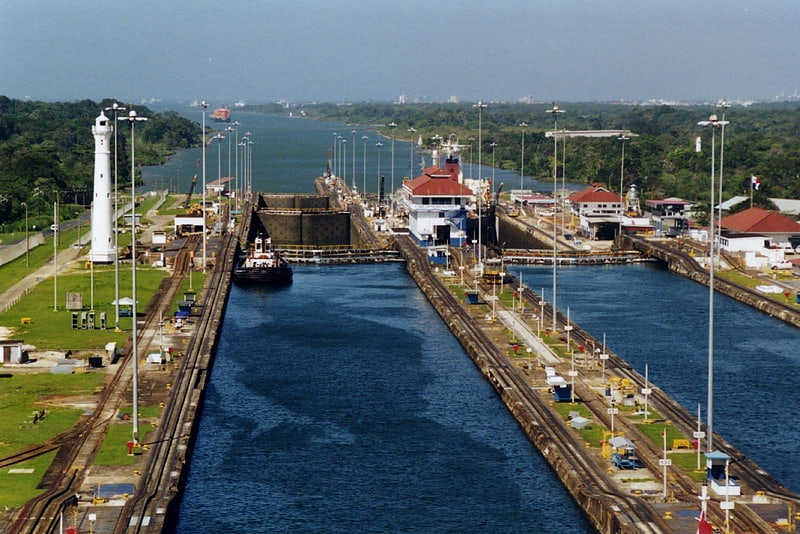
The Panama Canal locks are a lock system that lifts ships up 85 feet to the main elevation of the Panama Canal and down again. The original canal had a total of six steps for a ship's passage. The total length of the lock structures, including the approach walls, is over 1.9 miles. The locks were one of the greatest engineering works ever to be undertaken when they opened in 1914. No other concrete construction of comparable size was undertaken until the Hoover Dam, in the 1930s.
There are two independent transit lanes, since each lock is built double. The size of the original locks limits the maximum size of ships that can transit the canal; this size is known as Panamax. Construction on the Panama Canal expansion project, which included a third set of locks, began in September 2007, finished by May 2016 and began commercial operation on 26 June 2016. The new locks allow transit of larger, New Panamax ships, which have a greater cargo capacity than the previous locks were capable of handling.[1]
Miraflores, Panama City
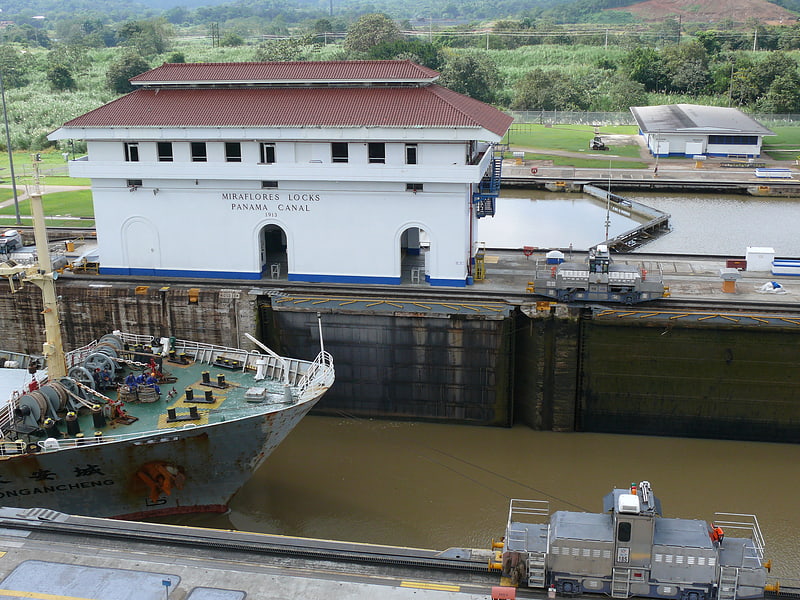
Visitor center in Panama City. Miraflores is the name of one of the three locks that form part of the Panama Canal, and the name of the small lake that separates these locks from the Pedro Miguel Locks upstream. In the Miraflores locks, vessels are lifted 54 feet in two stages, allowing them to transit to or from the Pacific Ocean port of Balboa in Panama City. Ships cross below the Bridge of the Americas, which connects North and South America.
As of 2005, the following schedule was in effect for ship transit through the locks: From 06:00 to 15:15, ships travel from the Pacific toward the Atlantic. From 15:45 to 23:00, ships travel from the Atlantic toward the Pacific. At any other time, travel is permitted in both directions.
A visitors center allows tourists to have a full view of the Miraflores locks operation. Binoculars are recommended to view the Pedro Miguel locks in the distance. As of 2016, admittance for adults to the visitors center costs US$15 (observation terrace) with lower rates for children and senior citizens. Panamanian residents are admitted at US$3 per person. Viewing a transit operation at the centre can take more than 30 minutes. A souvenir shop on the ground level sells related merchandise. The centre closes at 17:00.[2]
Panamá Viejo, Panama City
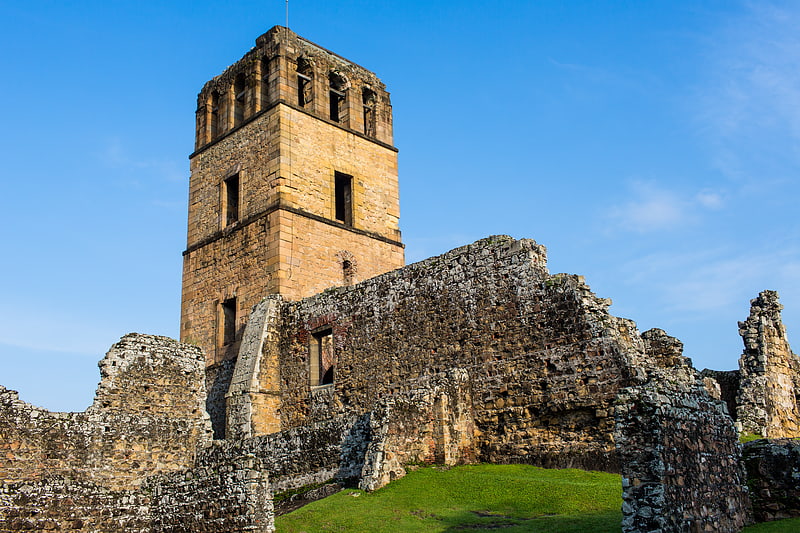
Historical heritage site with a museum. Panamá Viejo, also known as Panamá la Vieja, is the remaining part of the original Panama City, the former capital of Panama, which was destroyed in 1671 by the Welsh privateer Henry Morgan. It is located in the suburbs of the current capital. Together with the historical district of Panamá, it has been a World Heritage Site since 1997.[3]
Panama Canal, Colon
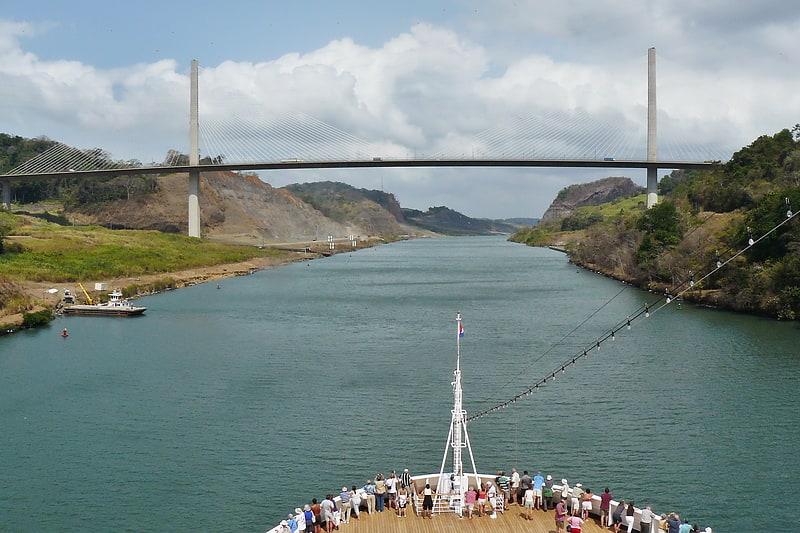
Also known as: Canal de Panamá
Waterway in Panama. The Panama Canal is an artificial 82 km waterway in Panama that connects the Atlantic Ocean with the Pacific Ocean and divides North and South America. The canal cuts across the Isthmus of Panama and is a conduit for maritime trade. One of the largest and most difficult engineering projects ever undertaken, the Panama Canal shortcut greatly reduces the time for ships to travel between the Atlantic and Pacific oceans, enabling them to avoid the lengthy, hazardous Cape Horn route around the southernmost tip of South America via the Drake Passage or Strait of Magellan and the even less popular route through the Arctic Archipelago and the Bering Strait.
Colombia, France, and later the United States controlled the territory surrounding the canal during construction. France began work on the canal in 1881, but stopped because of lack of investors' confidence due to engineering problems and a high worker mortality rate. The United States took over the project on May 4, 1904, and opened the canal on August 15, 1914. The US continued to control the canal and surrounding Panama Canal Zone until the 1977 Torrijos–Carter Treaties provided for handover to Panama. After a period of joint American–Panamanian control, the canal was taken over by the Panamanian government in 1999. It is now managed and operated by the government-owned Panama Canal Authority.
Canal locks at each end lift ships up to Gatun Lake, an artificial lake created to reduce the amount of excavation work required for the canal, 26 m (85 ft) above sea level, and then lower the ships at the other end. The original locks are 33.5 m (110 ft) wide. A third, wider lane of locks was constructed between September 2007 and May 2016. The expanded waterway began commercial operation on June 26, 2016. The new locks allow transit of larger, New Panamax ships.
Annual traffic has risen from about 1,000 ships in 1914, when the canal opened, to 14,702 vessels in 2008, for a total of 333.7 million Panama Canal/Universal Measurement System (PC/UMS) tons. By 2012, more than 815,000 vessels had passed through the canal. In 2017 it took ships an average of 11.38 hours to pass between the canal's two locks. The American Society of Civil Engineers has ranked the Panama Canal one of the seven wonders of the modern world.[4]
Fort San Lorenzo, Colon
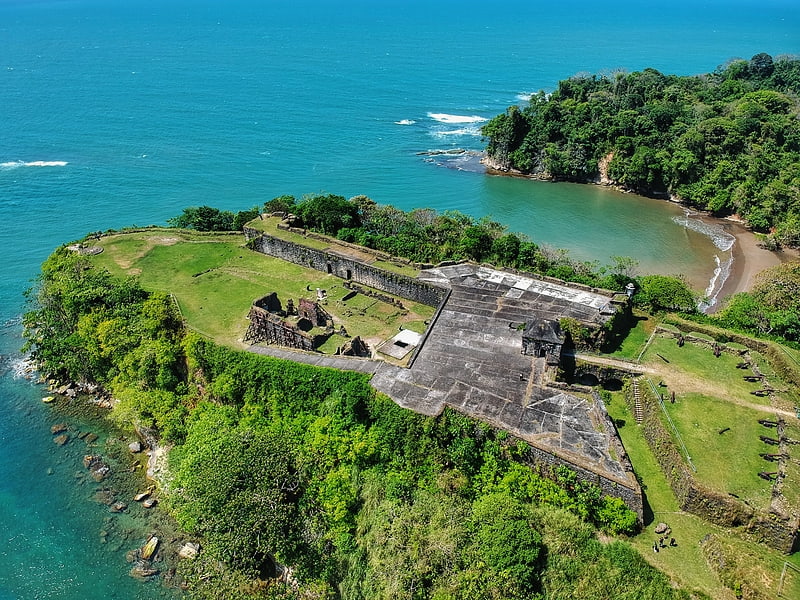
Also known as: Fuerte de San Lorenzo
Historical place in Colón, Panama. Chagres, once the chief Atlantic port on the isthmus of Panama, is now an abandoned village at the historical site of Fort San Lorenzo. The fort's ruins and the village site are located about 8 miles west of Colón, on a promontory overlooking the mouth of the Chagres River.[5]
Atlantic Bridge, Colon
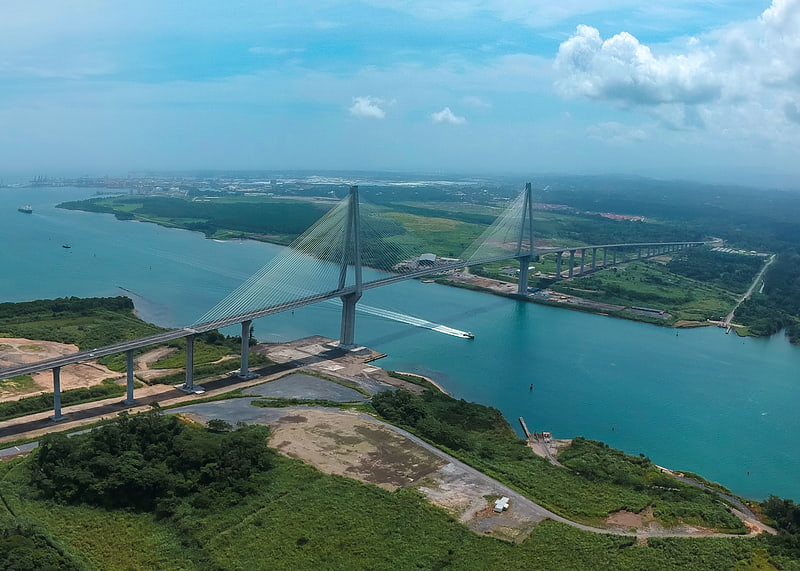
Cable-stayed bridge in Colón, Panama. The third bridge over the Panama Canal, known as the Atlantic Bridge, is a road bridge in Colón, Panama, which spans the Atlantic entrance to the Canal. It is the third bridge over the Panama Canal after the Bridge of the Americas and the Centennial Bridge, both on the Pacific side of the canal.
The bridge is a double-pylon, double-plane, concrete girder, cable-stayed bridge with a main span of 530 metres (1,740 ft) and two side spans of 230 metres (750 ft). The east and west approaches are 1,074 metres (3,524 ft) and 756 metres (2,480 ft) long, respectively. The bridge was designed by the China Communication Construction Company (CCCC) consisting of HPDI and Louis Berger Group and built by Vinci Construction.[6]